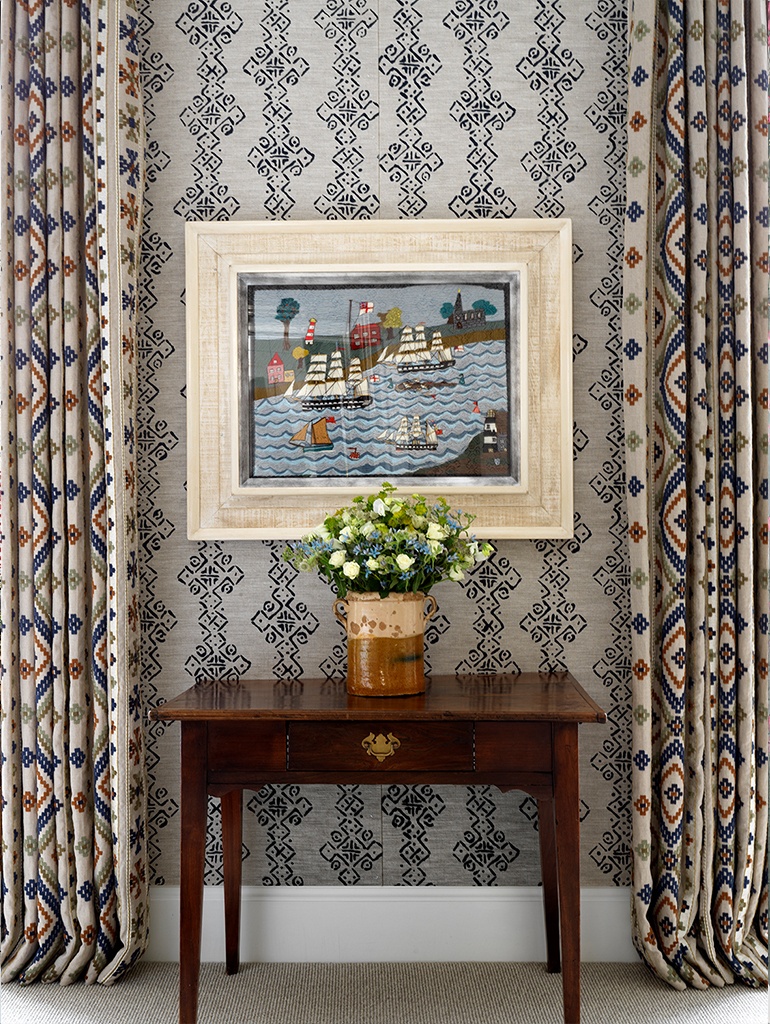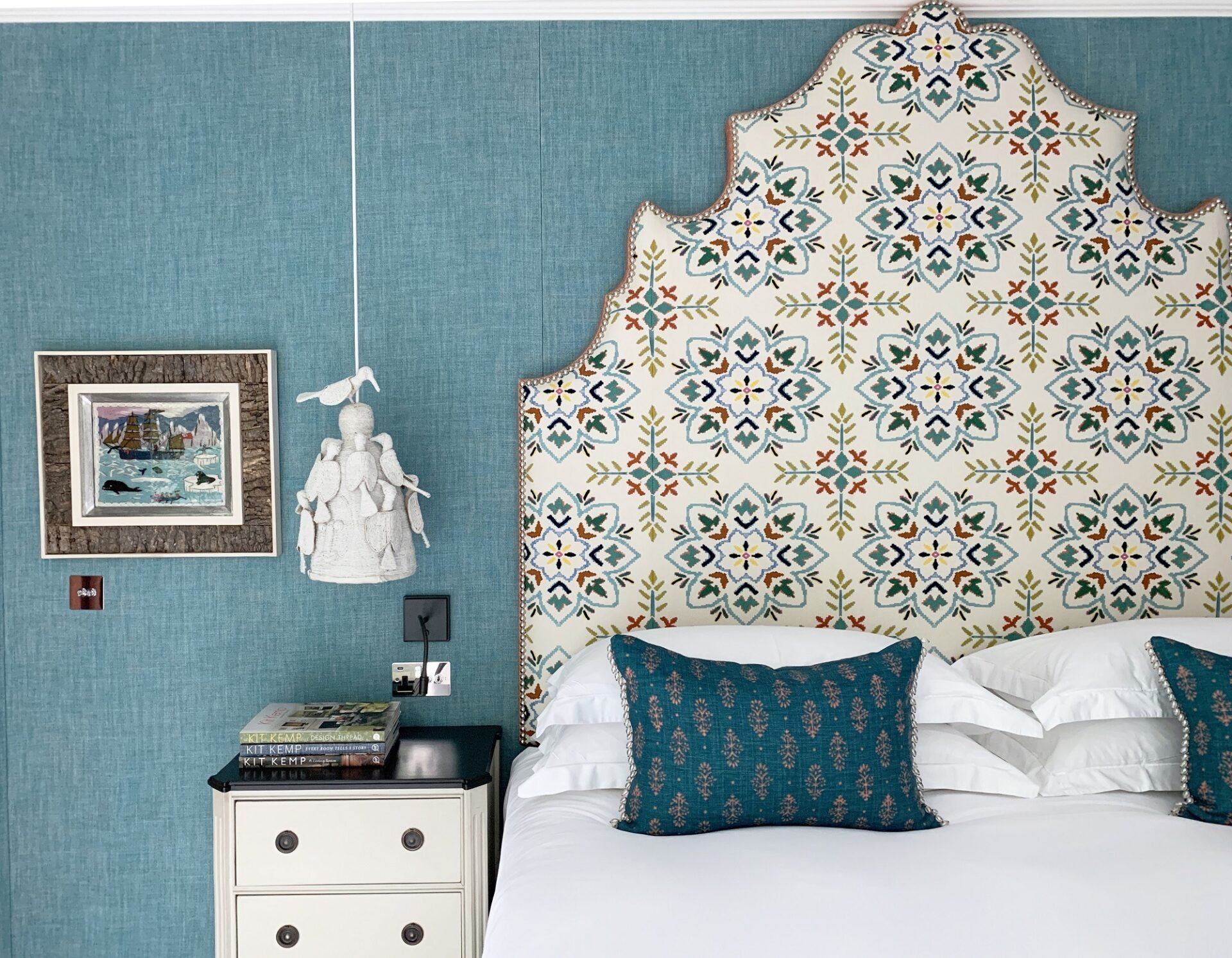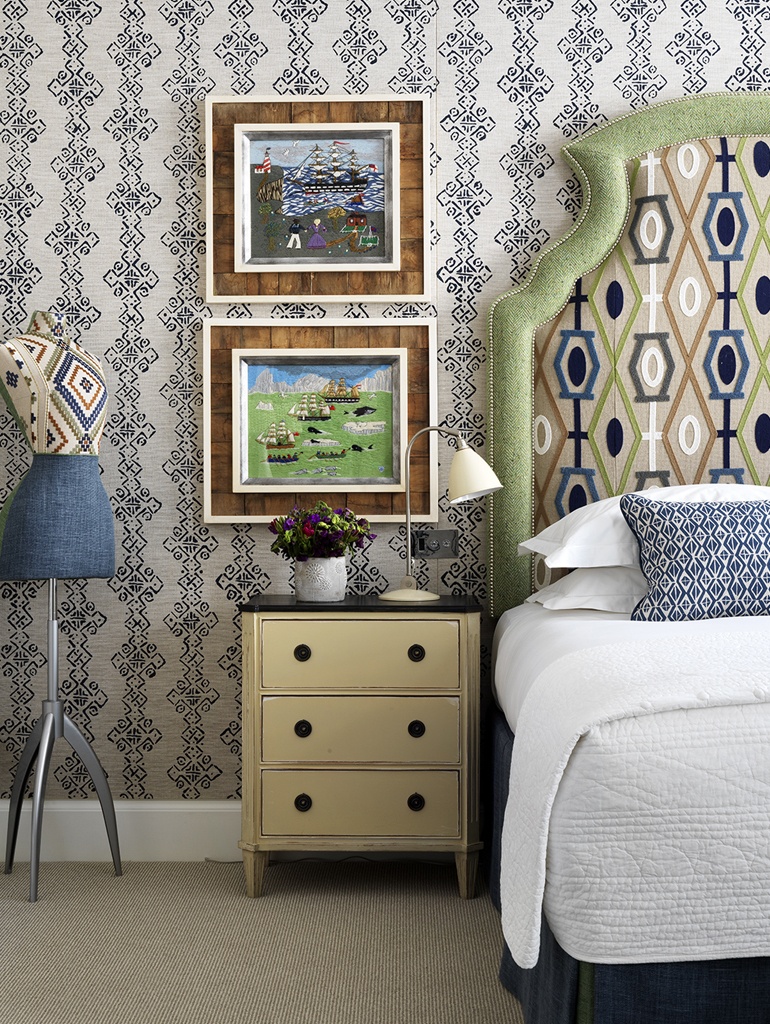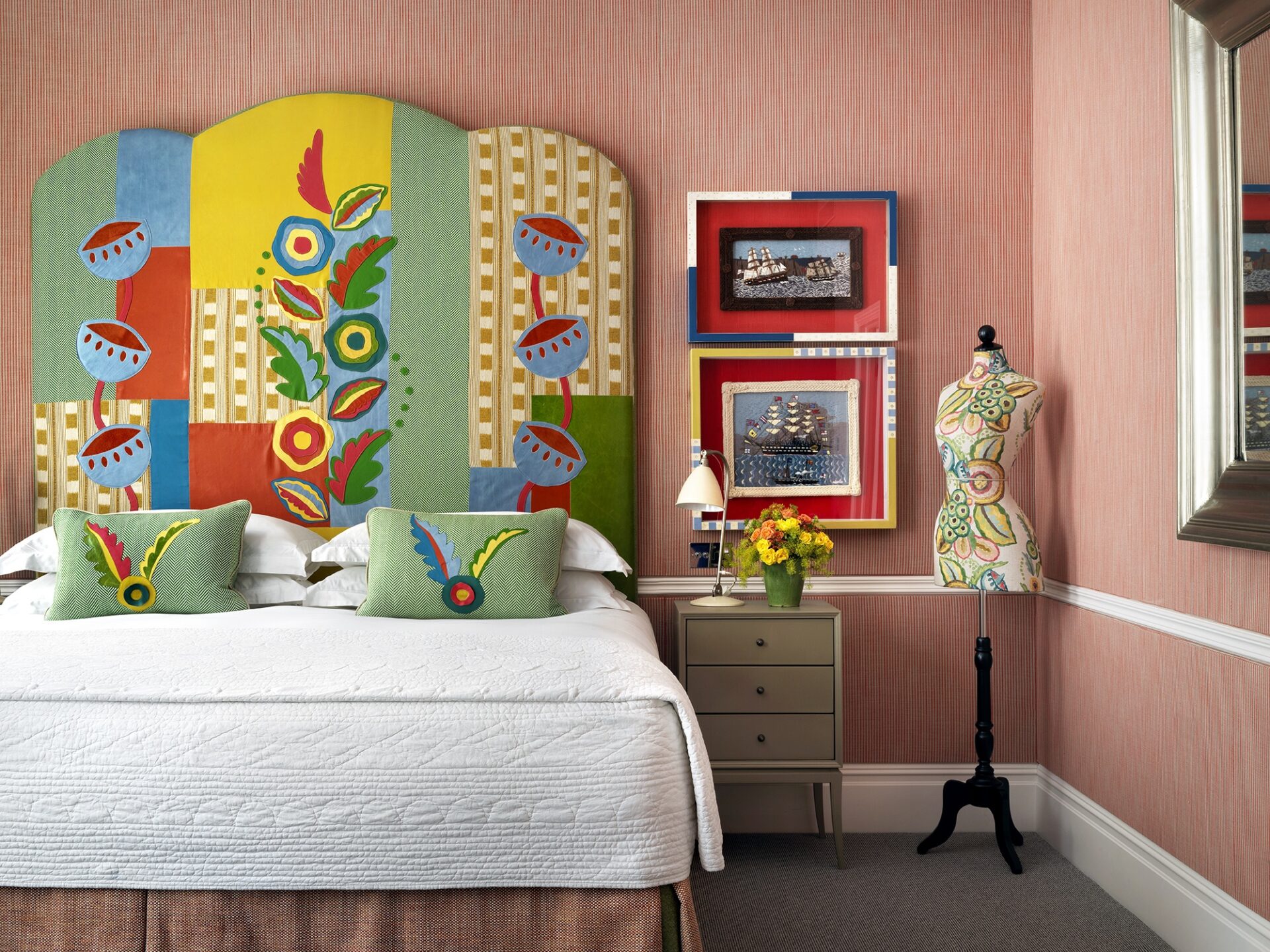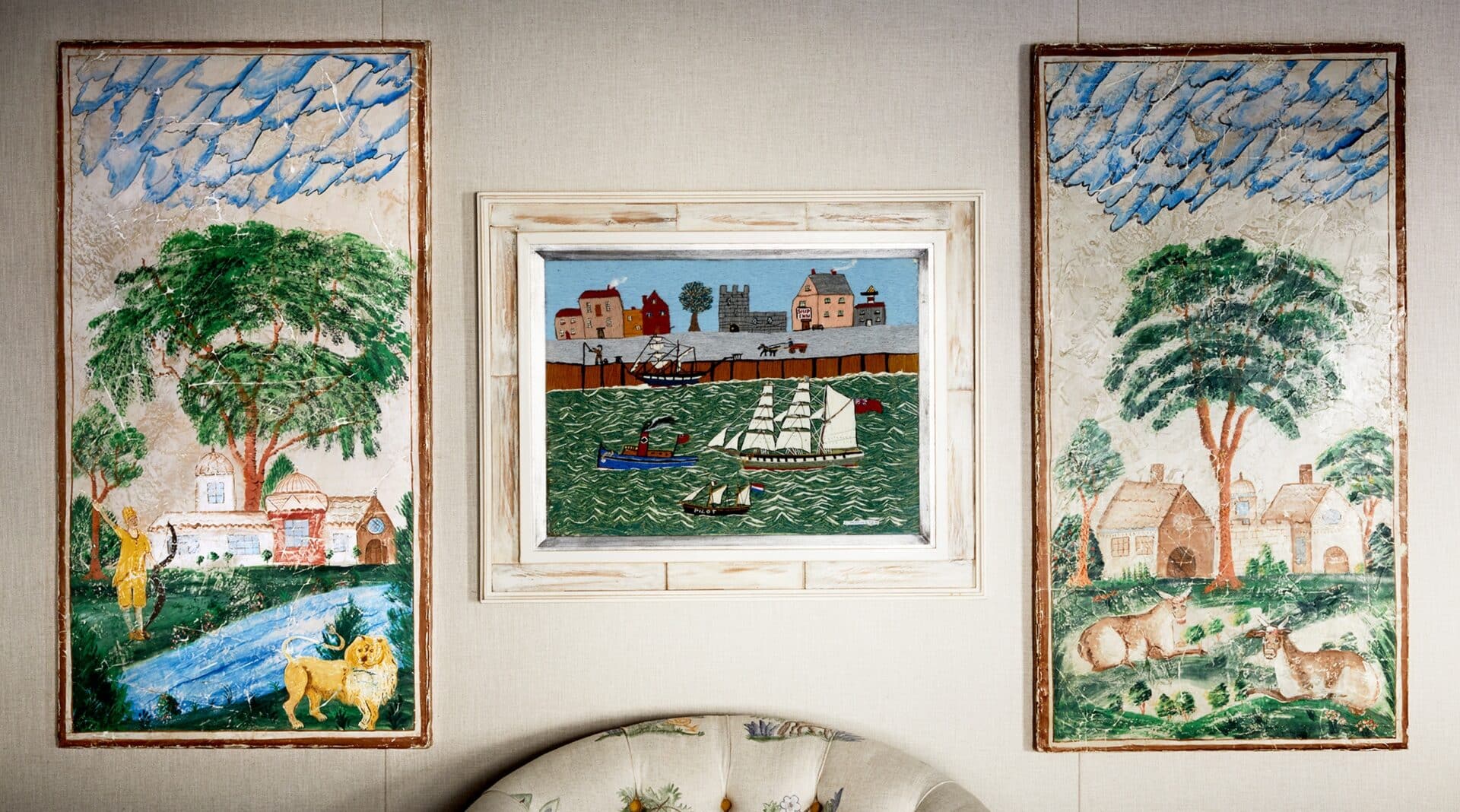
Meet the Maker: Colin Millington
Meet the MakerColin Millington’s work captures everything we love about hand-crafted pieces. Each artwork is unique and filled with so much intrigue and detail. These lyrical and whimsical wool-work illustrations, which we have featured in many of our hotels, are intricate and historical yet wonderfully modern...
Colin Millington’s work captures everything we love about hand-crafted pieces. Each artwork is unique and filled with so much intrigue and detail. These lyrical and whimsical wool-work illustrations, which we have featured in many of our hotels, are intricate and historical yet wonderfully modern.
A retired sailor living on the Norfolk coast, Colin’s embroidered characters dance across sandy beaches and boats sail across whale filled seas. His pieces remind us of the work of Alfred Wallis but using wool-work, which is the art of creating pictures of ships with scraps of coloured wool.
Colin Millington’s work is based on the nautical tradition of British sailors practicing crafts whilst away at sea. We had the chance to catch up with Colin and ask him all the questions we have wanted to for so long.
1. Your needlepoint depicts both English settings and far off lands. Are you inspired by your own travels or is it all your imagination?
It comes from both really. During my time in the Merchant Navy, I travelled the world from North and South America to India, Japan and Australia. Down the East and West coasts of Africa and through the Panama and Suez canals.
During my years as a Coast Guard I watched how the sea meets the shore which often features in my work. I also look at historical sources, old prints and Victorian pottery and of course old sailors’ wool-works.
3. How did you discover the craft?
Seamen could always use a needle. When I was first at sea as an apprentice on a tramp steamer we had to hand sew the canvas hatch covers to keep out the weather. Many years later I saw an old wool-work in an antique shop window and just thought I would have a go at copying one. It really just developed from there.
2. In these modern times with machinery often taking over skilled crafts, how do you see this style continuing and what can we do to keep it alive?
Machines will never replace hand work as they are too precise and lack the ability to improvise. Sometimes I will run out of a colour of wool that I might be using for the sea, so I will pick another colour and this changes the overall effect. I often start with a drawing, but as I work the idea develops and grows.
To keep it alive? Break all the machines? We need to get back to teaching hand work at school and at home. The girls in my family were always taught to knit by their mothers. Children need to see us working so they become interested.
4. Each work tells a completely different story. How do you start telling those stories? Is it inspiration from an object or a tale you have been told?
Of course I have been told hundreds of tales during my time at sea and now I read books. But often it is looking at pictures of old ships that is the starting point.
6. How long do your works usually take?
I mostly work in the evenings, for perhaps two or three hours and a picture will take between one and two weeks.
5. The works are made up of so many textures; is there a special wool and technique you use to create this?
I use Appletons two ply pure wool. They are an old English company and make over four hundred different colours. I might put in details using silk and occasionally glass beads. I mostly use simple long and short stitch and sometimes chain stitch.


